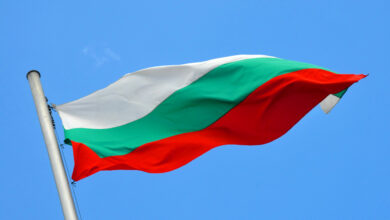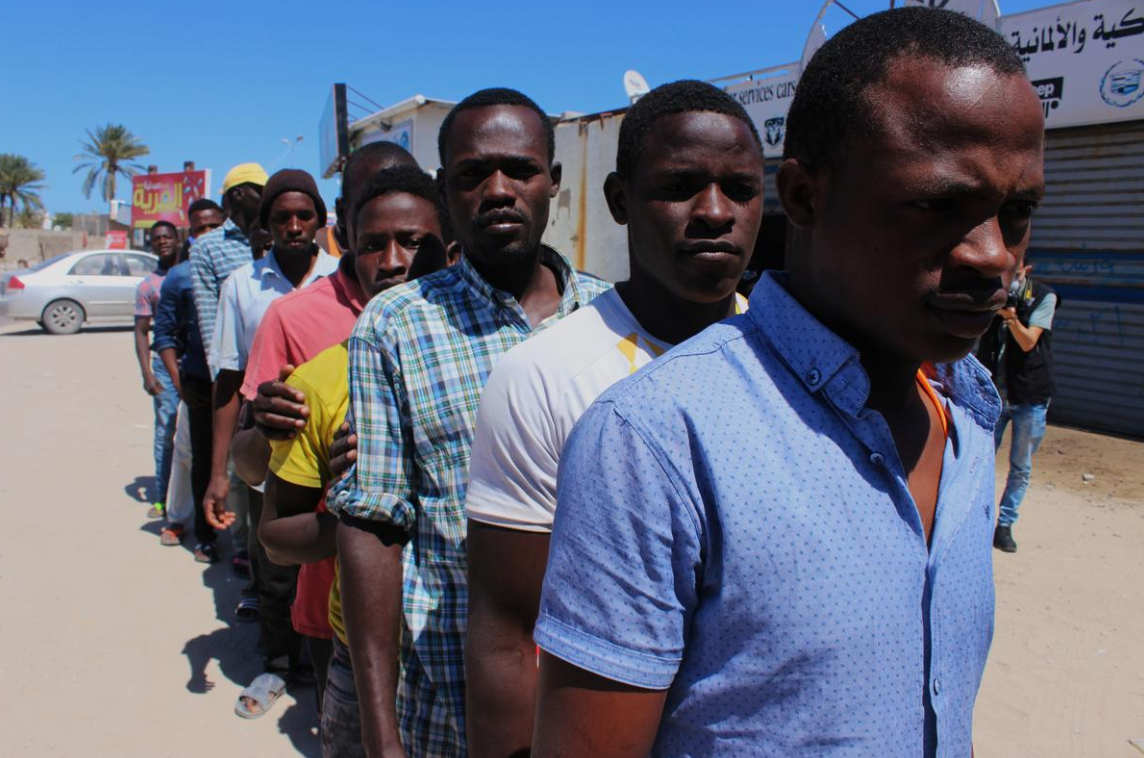From Rashid, a coastal city some 65 kilometers east of Alexandria, it takes a 10-minute sojourn by ferry to get from one shore of the Nile to the other. Ferries go back and forth between the city’s pristine, well-paved corniche and a make-shift dock. On the other side, a string of villages runs alongside the river. From here, people are smuggled–via a four-day, LE35,000 boat-ride–across the Mediterranean to the southern shores of Italy.
The boats carry men packed in boxes meant for fish. For aspiring migrants and fisherman, there’s nothing routine about this journey. Until recently, most Egyptian migrants en route to the Italian coast crossed by land into Libya before making the sea voyage. Now, however, many illicit journeys to Italy set out from Egypt’s North Coast as well.
“I lost my best friend because of this. He wanted to get married and improve his social stature, just like everyone else. The sea was his only option,” said Abbas, a fisherman, referring to the risky trips to Europe taken by many of his fellow villagers. “He left five months ago–from right here–and we haven’t heard from him since.”
Wracked by poverty, unemployment and a deteriorating local fishing industry, the attempt at migration has come to be seen as the sole option for the men of these villages. Official statistics estimate unemployment rates in Egypt at 8.5 percent, while an estimated 40 percent of Egypt’s 80 million inhabitants live below the poverty line.
“People in our village know how to steer boats. So they’re recruited for a fee to take migrants across the sea,” said Abdul Fattah, who was intercepted by authorities while crossing from Alexandria to Italy–his third attempt–before being deported back to Egypt.
Gabriele Del Grande, an Italian researcher and founder of the Fortress Europe observatory, which documents irregular migration to Europe from Africa, notes the difference between setting out from Egypt and Libya.
“In Egypt, unlike Libya, the transfer of migrants is put in the hands of fishermen who are often unaware of the whole operation. Only the owners and captains of the boats know," she said. "Fishermen set sail with an entire crew on board, but once on the high seas, they’re approached by small boats full of migrants and ordered to take the route to Sicily.”
In the past, Egypt’s Mediterranean coastline was used as an exit point for smuggling operations to Greece, or for other parts of the European Union via Crete, Cyprus and Turkey. In the past year, the local press has reported a series of capsized boats en route to Italy from Alexandria or Marsa Matrouh. This suggests that, due to increased border control mechanisms, the journeys are getting longer, riskier and more expensive–but people are still desperate enough to take them.
In 2008, an estimated 1500 would-be migrants died in the Mediterranean while en route to the southern shores of the EU from North Africa.
Attempts by the EU to curb migratory flows from Libya via border-control measures represent a direct cause of the increase in departures from Alexandria.
In 2003, Italy and Libya signed an agreement on illegal immigration, whereby the former provided the latter with vehicles, rubber dinghies and satellite navigation systems. The agreement culminated in stepped-up bilateral cooperation manifested in increased border-control assistance, projects for the "voluntary return" of migrants and the joining of Libya to Frontex, a European agency devoted to controlling national borders.
In February 2009, the European Union’s external relations commissioner Benita Ferrero-Waldner pledged 20 million Euros to help solidify Libya’s border control mechanisms.
Until recently, Egyptians could freely access Libya by land–but new border control measures in Libya have since curtailed this movement. As of 2007, Egyptians had to show official work contracts bearing a stamp from the Egyptian Ministry of Foreign Affairs.
When asked about current requirements for an Egyptian to access Libya, an official at the Libyan Embassy in Cairo said simply, "The road is closed now."
These new regulations, however, do not seem to conform to the 1990 Four Freedoms Agreement between Libya and Egypt, which was meant to ensure free movement over the border. But the latest agreement, signed in all likelihood with the aim of curbing this "irregular" migration flow, has served to impede those trying to get to Italy by this route.
“There have been many Egyptian migrants sent back from Libya,” says Mathieu Luciano of the International Organization of Migration. "I don’t know today if there is still an irregular movement of Egyptians to Libya."
Repatriation has represented yet another curbing mechanism. The Maltese Home Affairs ministry, for example, has repatriated 900 Egyptians from Malta since 2004. Due to a recent bilateral accord signed with Egypt, Italy too has begun to deport migrants at an unprecedented rate: in December 2008, Italy repatriated 38 Egyptians that had arrived illegally; another 50 were repatriated at the beginning of 2009.
Nevertheless, illegal Europe-bound sea voyages continue to set out from Egyptian and Libyan shores.
“Despite all the awareness we’ve raised, the situation remains critical,” says Magda Abdul Rahman, general director of the emigration department at the Egyptian Manpower and Emigration Ministry. “There are young men who left, failed and came back–then want to repeat the same trip all over again.”
Less than one year ago, Sultan, from a village near Rashid, steered 40 people to the Italian island of Lampedusa.
“We spent sometime in Zuwara, then in Tripoli," Sultan recalls. "We took a dinghy from Tripoli before reaching a bigger, 12-meter boat, which I then steered for 24 hours.” After a series of unexpected mishaps, Sultan was deported back to Egypt following two months’ detention in Italy.
Gazing out across the sea from his little village, Sultan says the flow of illicit immigration remains ongoing. “During the month of Ramadan, boats regularly set out from here," he said. "Migrants and fishermen usually leave right after breaking the fast.”
As for himself, he has no plans to make a second attempt. “I get a lot of offers to steer migrants in small boats across the sea," he said. "But I don’t think I’ll do it again.”
Note: Some names have been altered to protect the identity of interviewees.
This article is part of ‘Take to the Sea,’ a project on Egyptian irregular migration to Europe through the Mediterranean Sea. It is sponsored by the American University in Cairo’s Centre for Migration and Refugee Studies.




